Floating Drill Press Vise
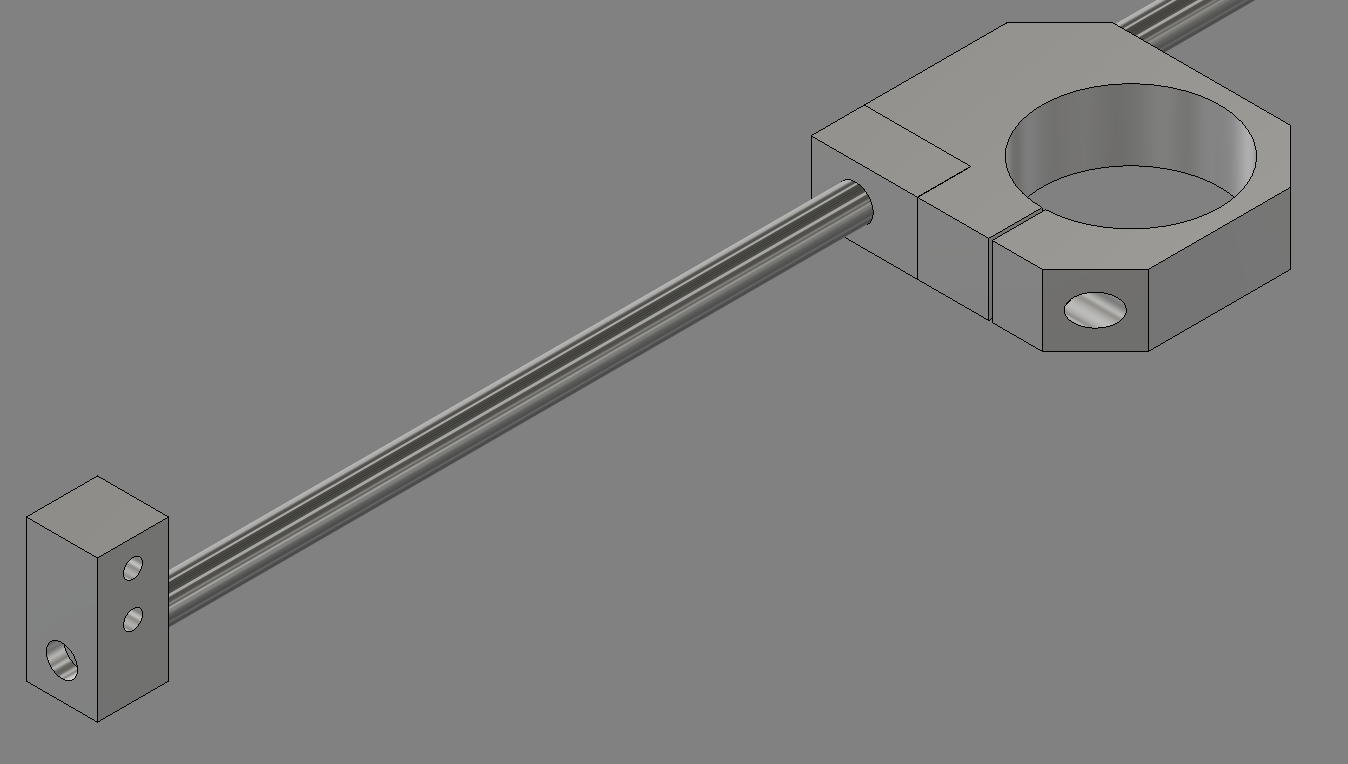
The Floating Drill Press Vise
Methods for securing drill presses to their tables have existed since the invention of the machine. Each of these come with a variety of advantages and disadvantages.
For example, consider the humble drill press vise.
A drill press vise does
- securely clamps material/stock to itself.
- provide several points that the user can use to stabilize the vise.
- and some other things.
A drill press vise does not
- lock the workpiece to the table on its own.
- allow easy transition of the workpiece to the next drilling point while the vise is locked to the table.
- provide an accurate way of locating a hole and clamping itself to the drill press.
In my shop, the drill press is highly valued for its convenient and easy setup. Using screws and bolts to hold the vise down to the table is not convenient and is not easy to set up accurately. C-clamps can be used as a cheap alternative, but are also finicky.
Pask Makes on YouTube inspired the solution to these problems with a floating vise lock.
Pask’s design is hardly utilitarian enough for my taste though, and requires some tools that I don’t have (such as a rotary table). The rod clamping pocket also appears to require a custom-fit, which would be time-consuming to machine.
The design for my own floating vise clamp uses a two-piece flexture clamp to simultaneously clamp a floating rod and the flexture to the drill press column.
Instead of using a machined pocket to clamp a floating rod, this design uses a simple block that is fit to the front of the clamping ring.
Build Photos
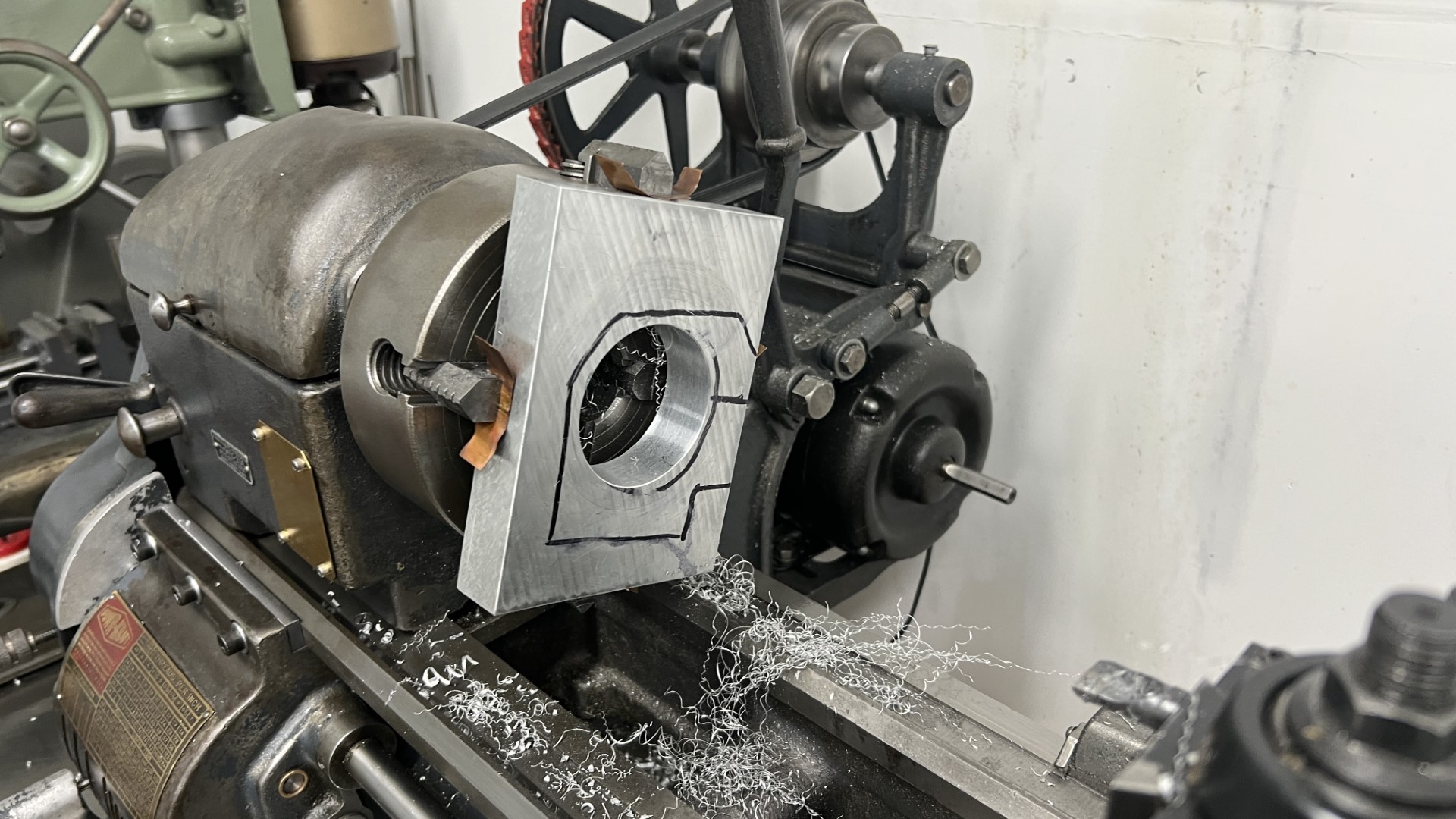
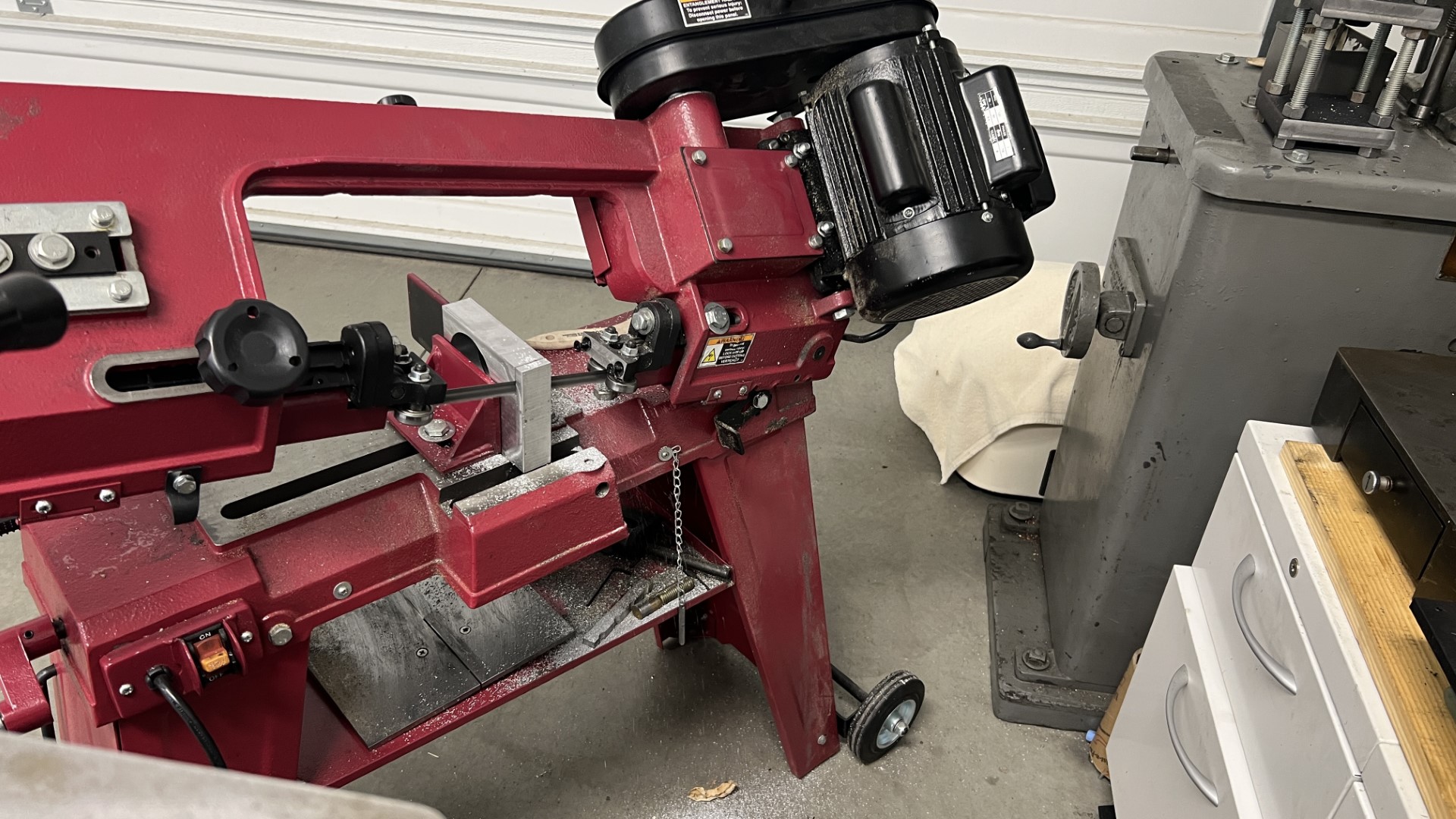
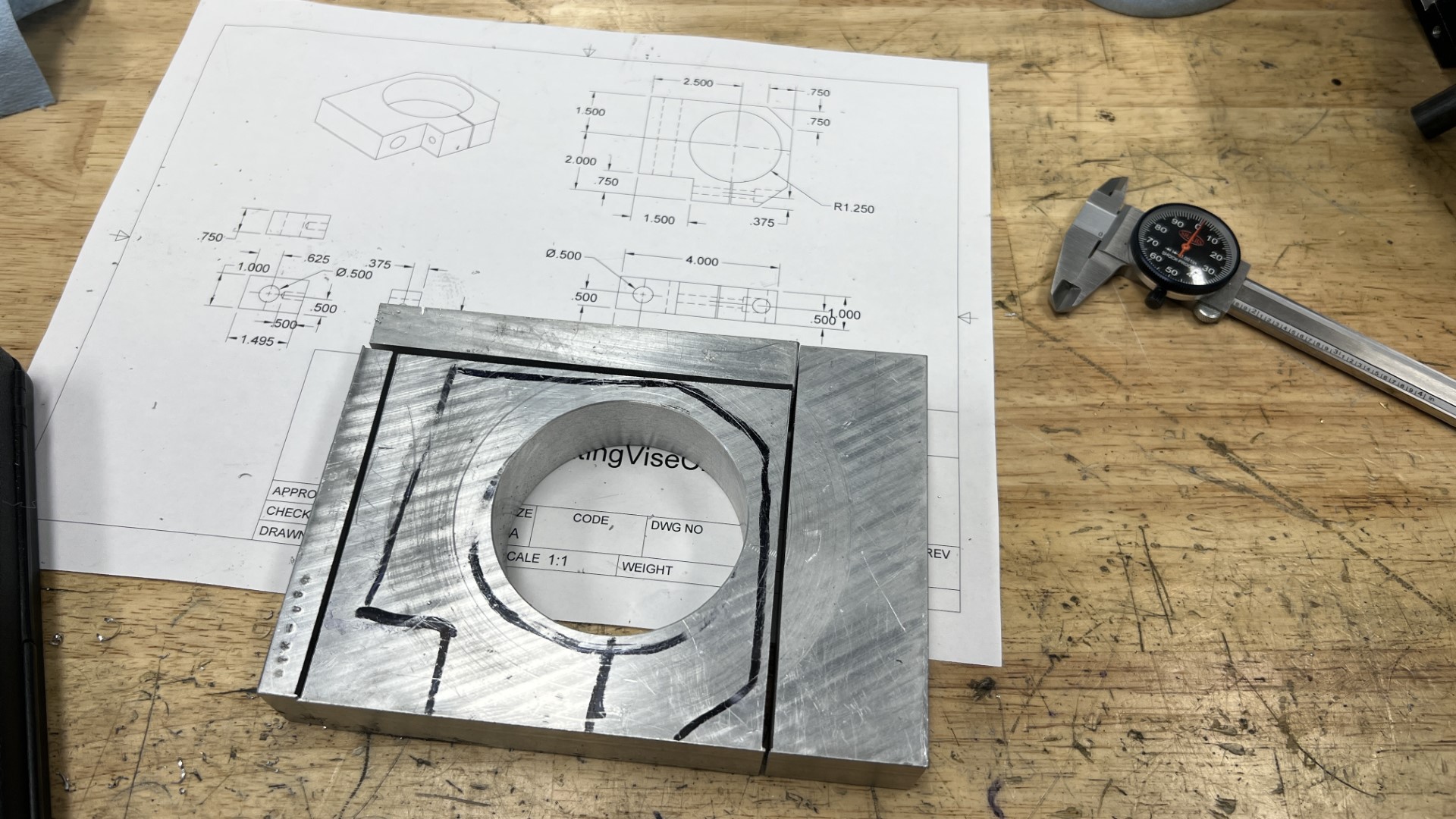
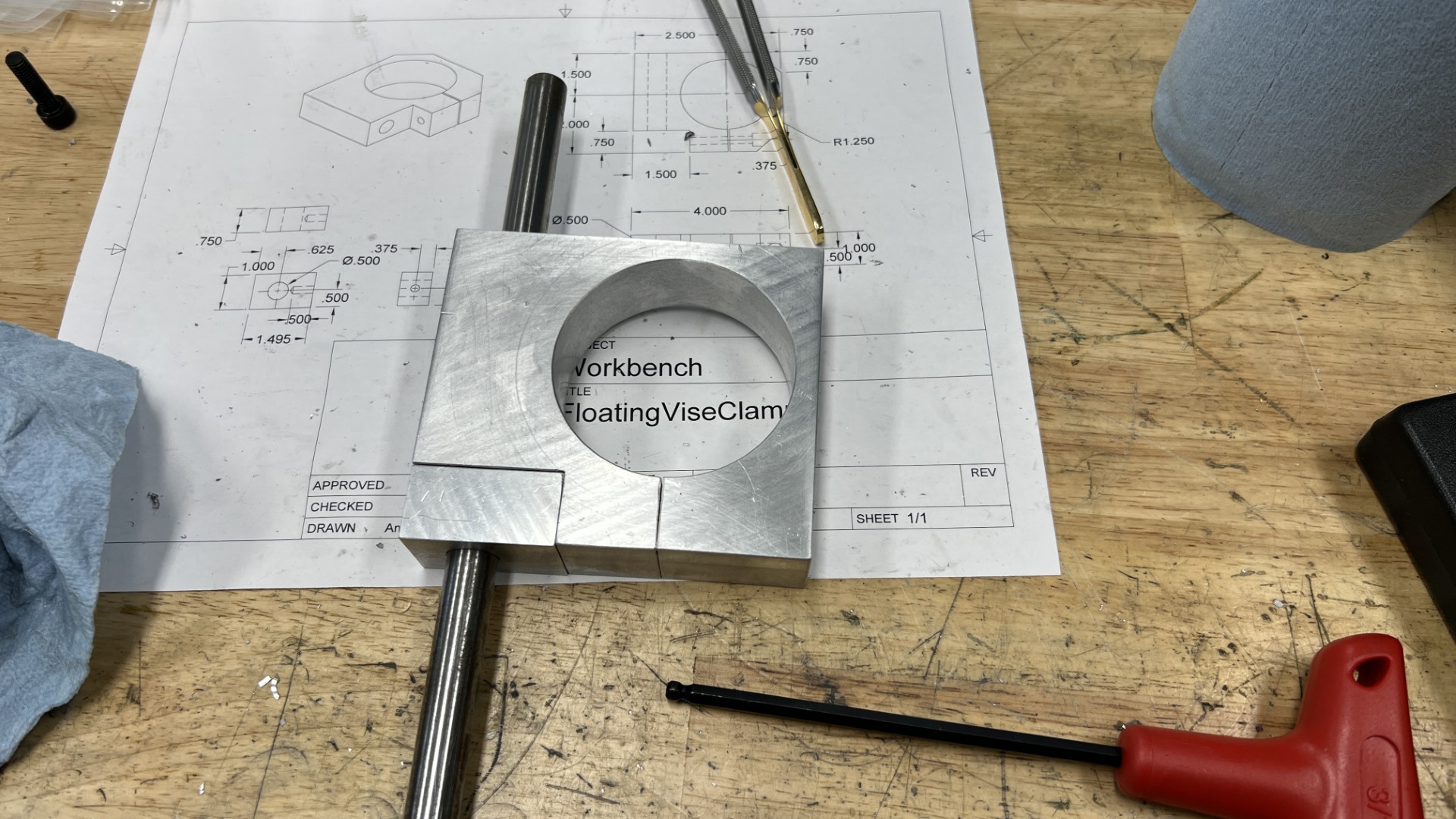
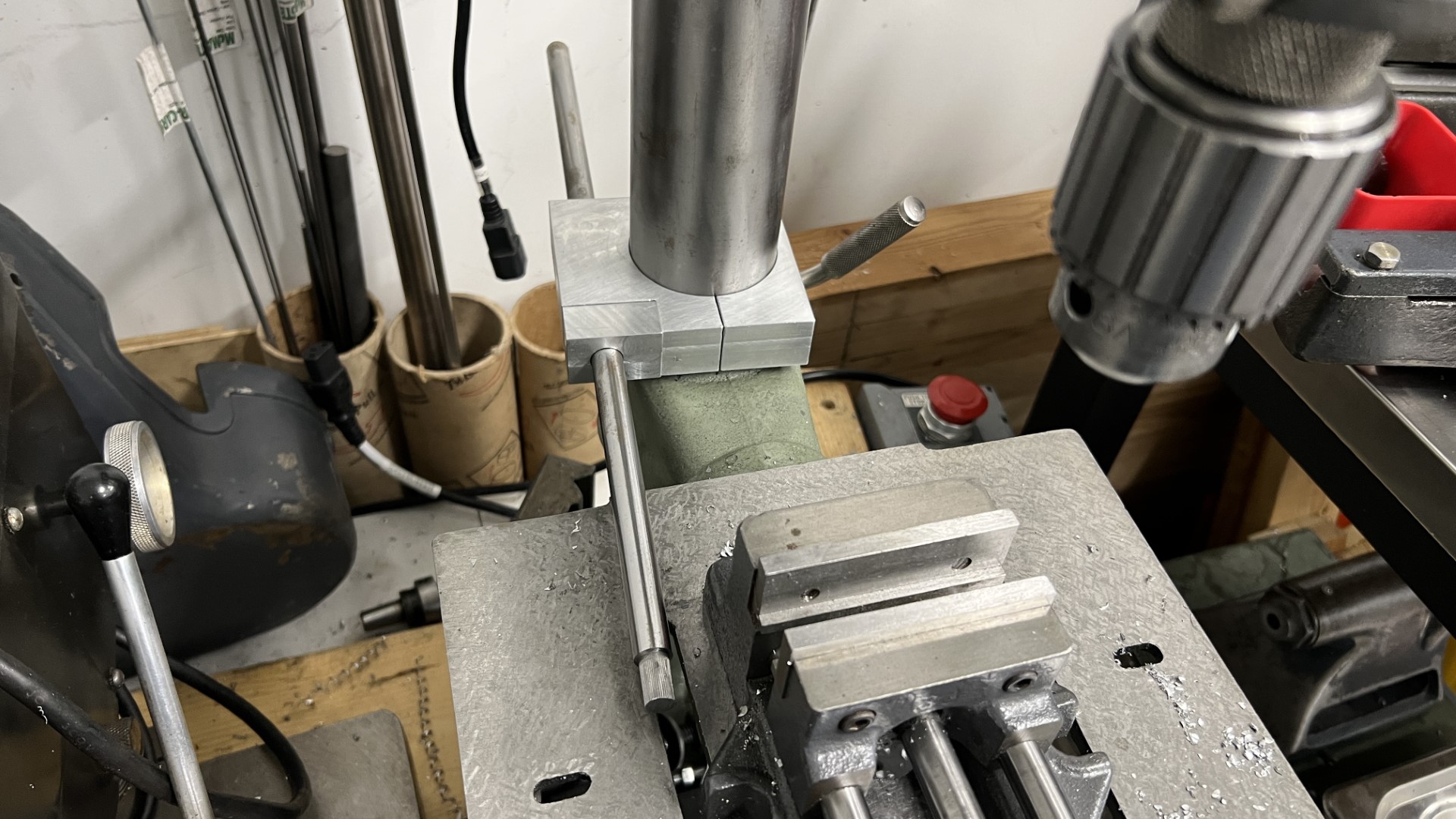
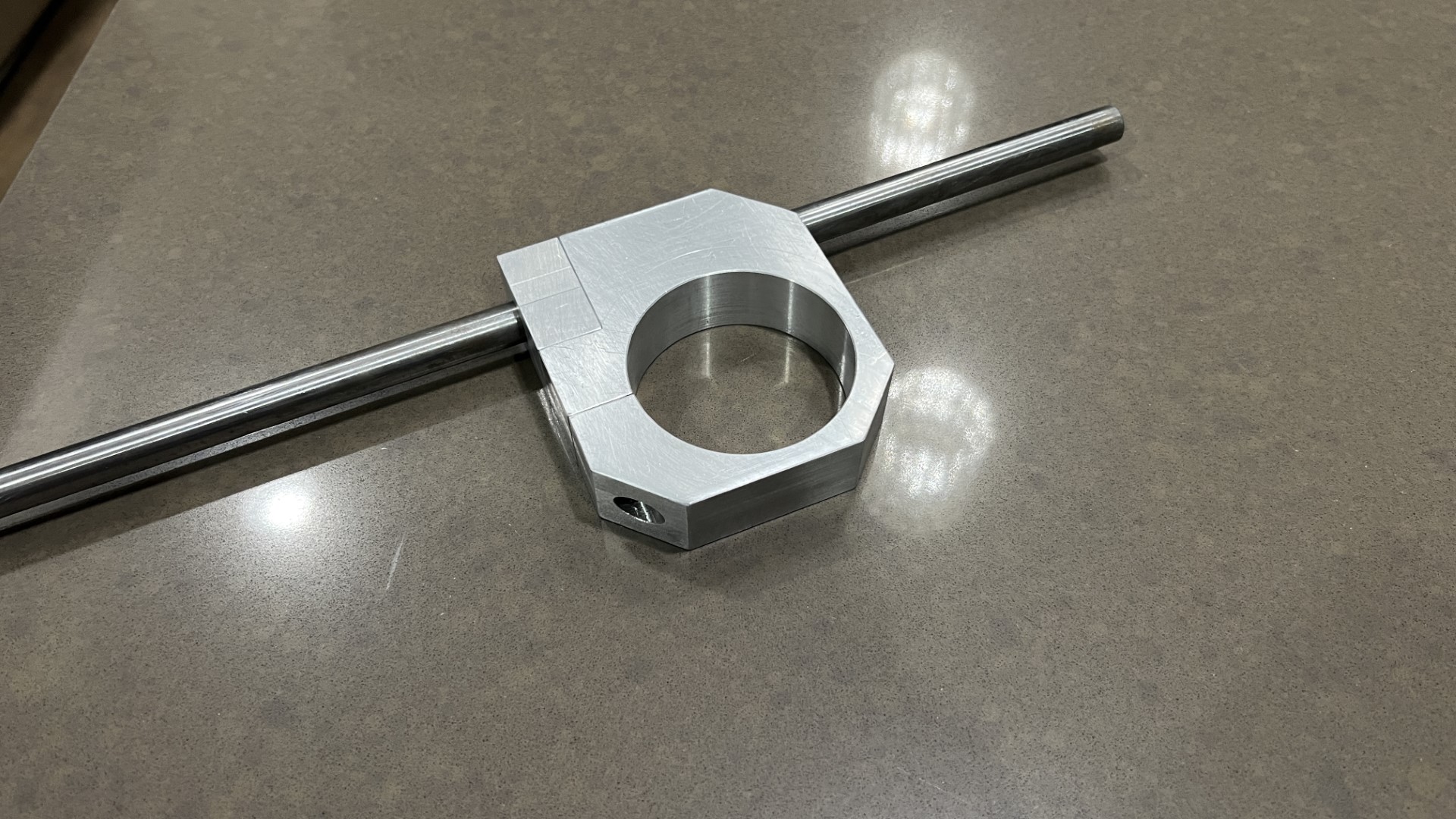
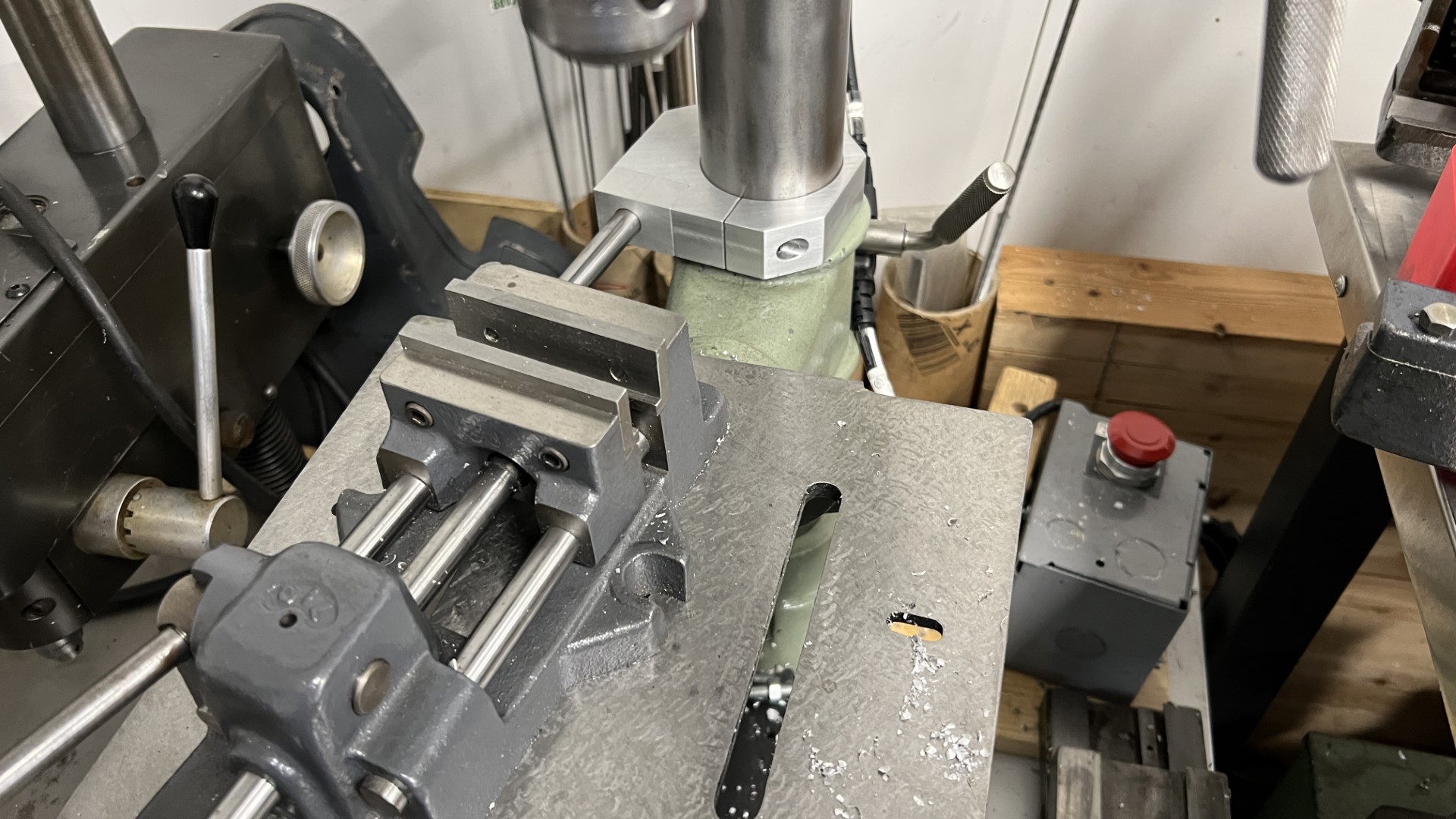
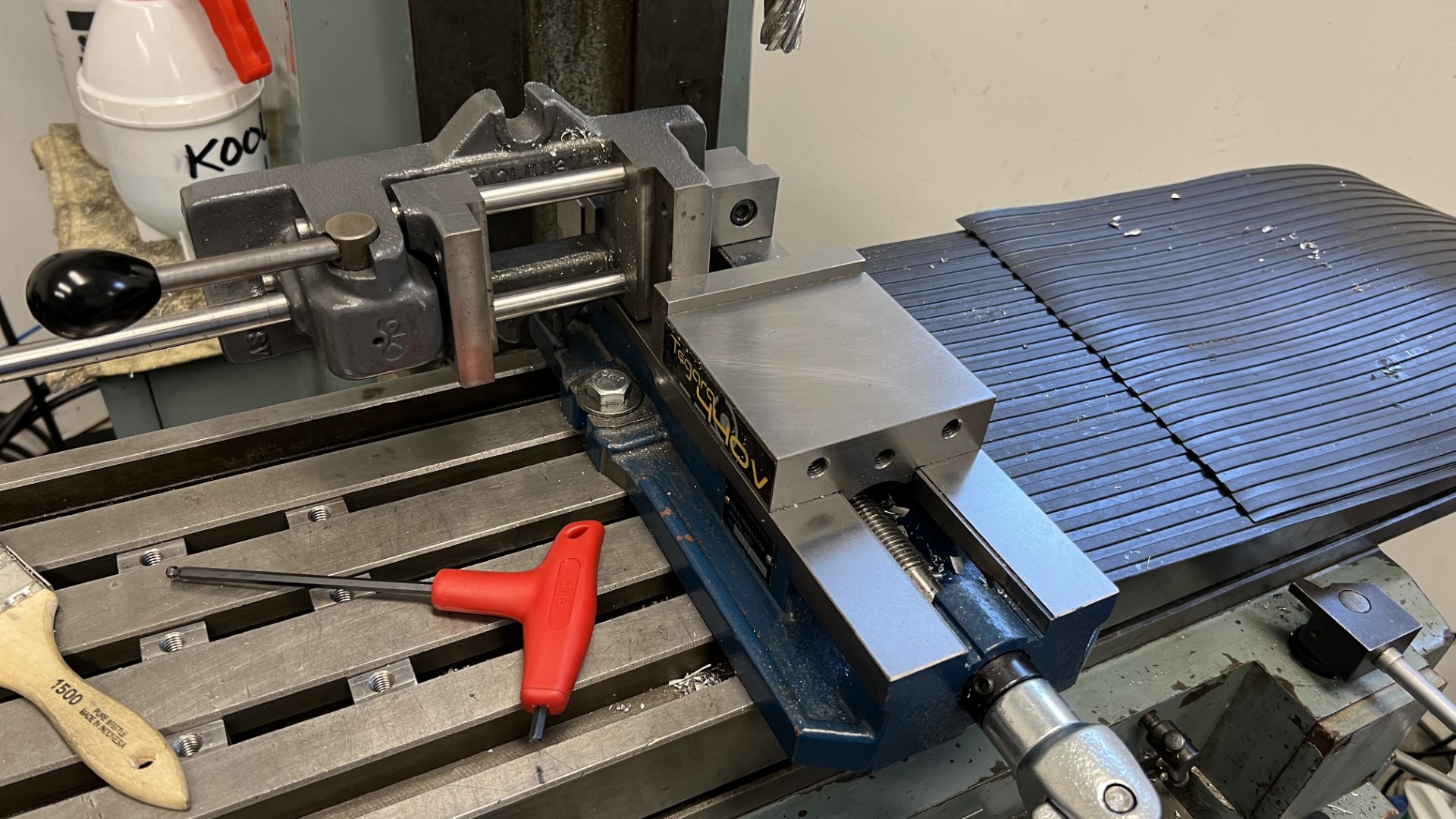
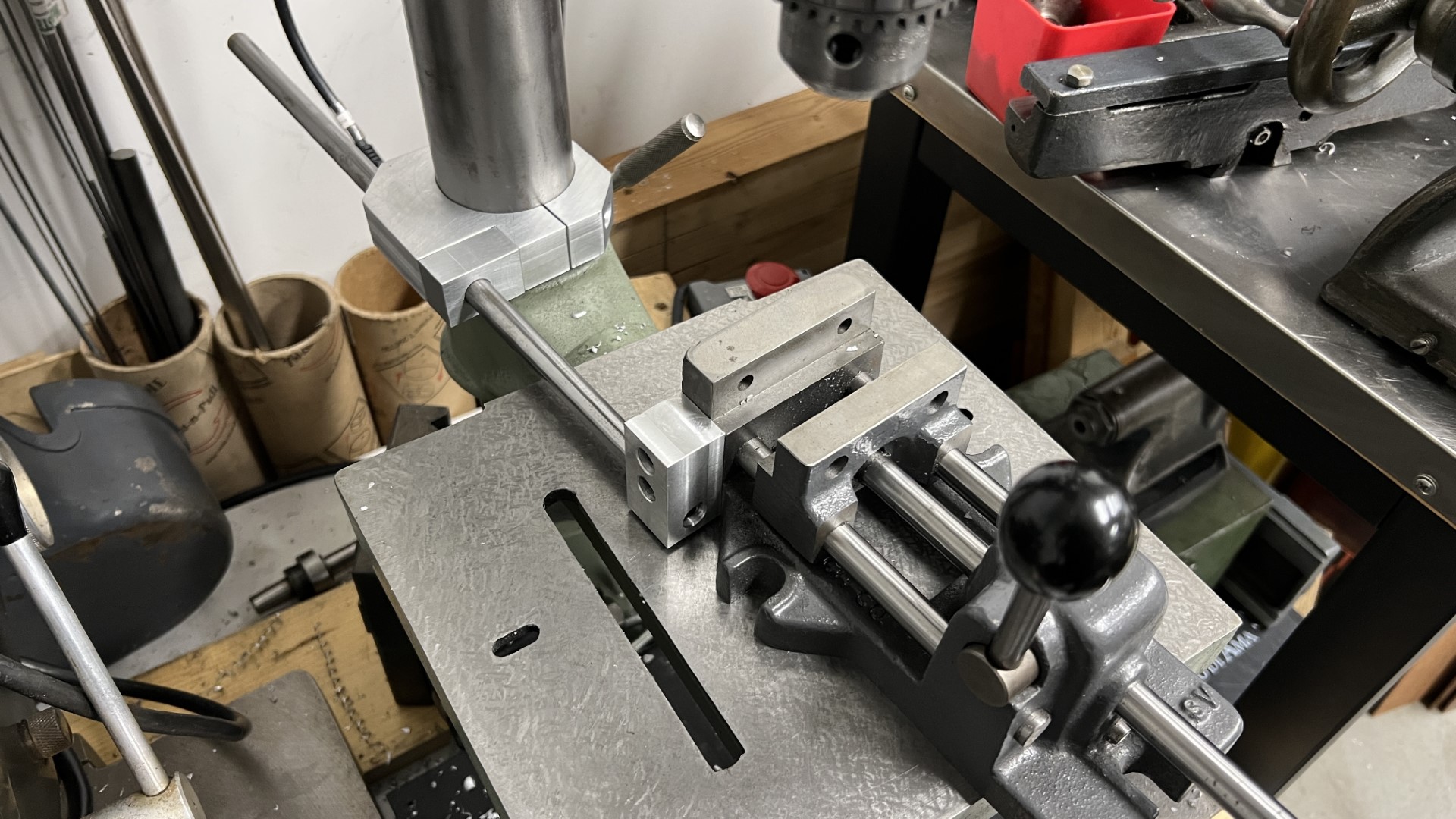
Testing
I chose a difficult test for a drill press to determine if the clamp would work well.
Clamping an uneven, sawcut workpiece in the vise, and drilling through it with a 1/2” drill without a center.
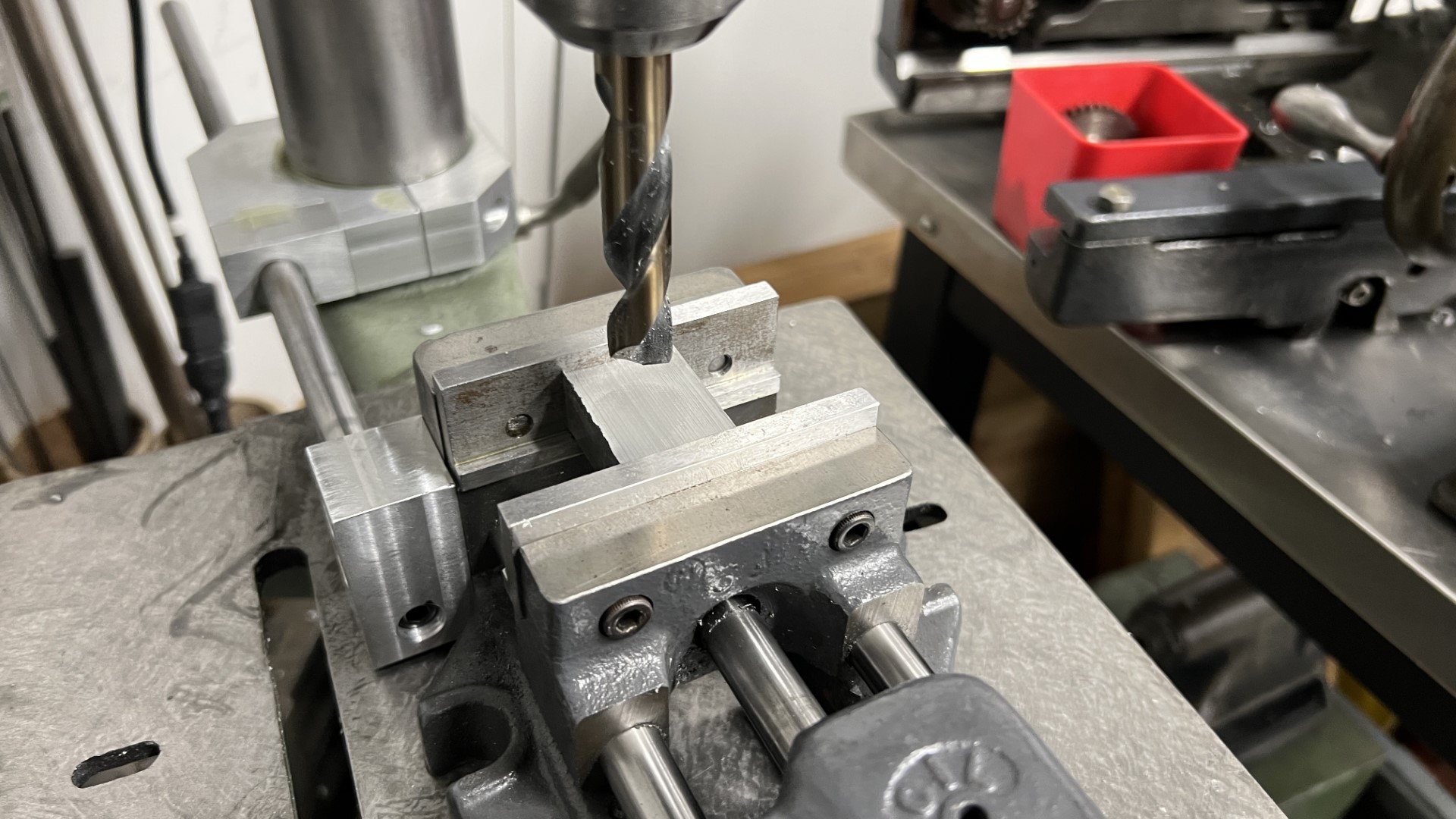
It worked like a charm!

Overall, I am really excited everytime that I use the new vise clamp.